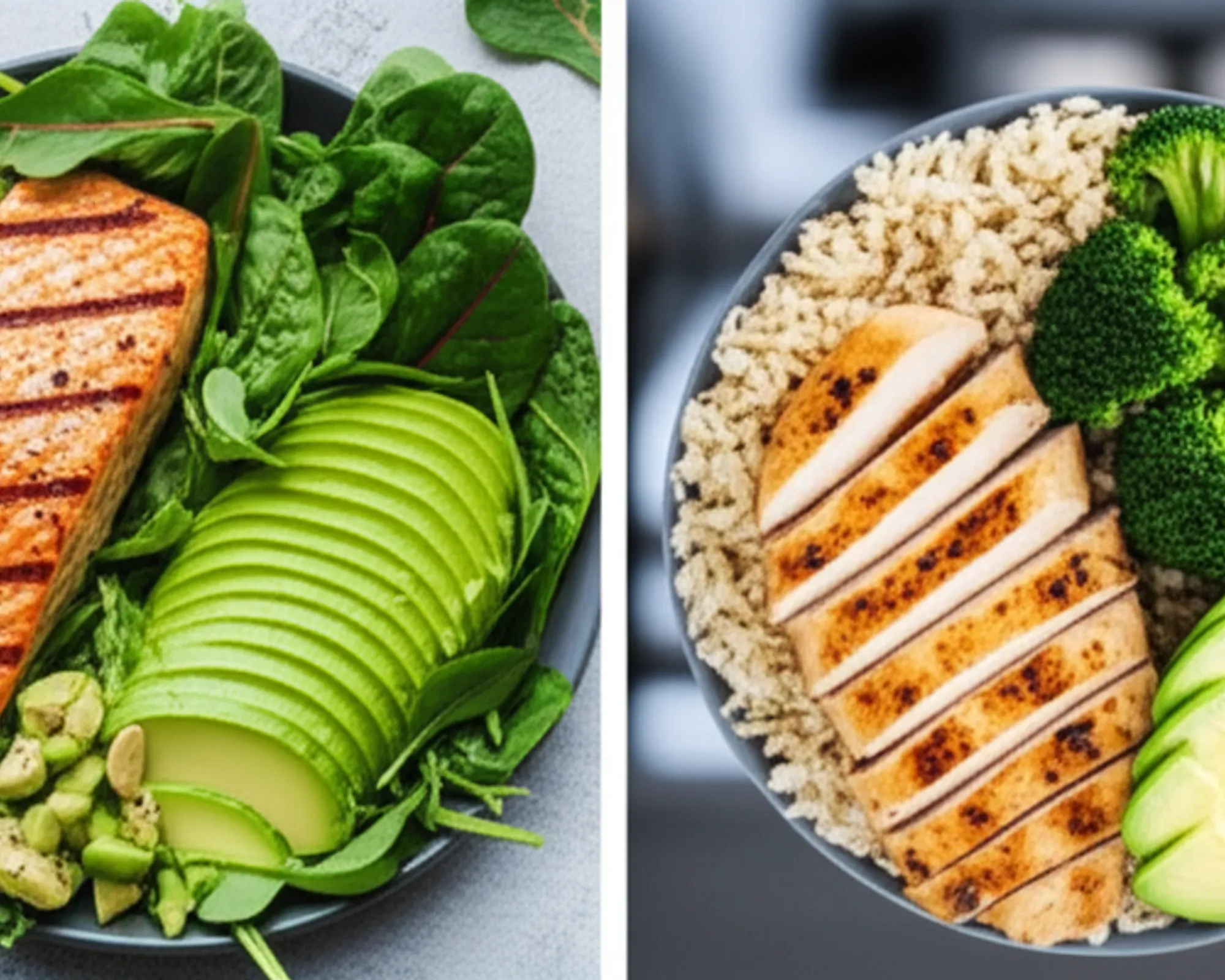How to Calculate Macros for Beginners in Fitness

Embarking on a fitness journey is exciting, but it can also feel overwhelming, especially when you start hearing terms like "macros." Don't worry, you're not alone! Understanding how to calculate your macronutrients (macros) is a fundamental step towards achieving your fitness goals, whether it's losing weight, building muscle, or simply maintaining a healthy lifestyle. This guide will break down the process into easy-to-understand steps, empowering you to take control of your nutrition.
What Are Macros and Why Do They Matter?
Macronutrients, or "macros," are the three main categories of nutrients that your body needs in large amounts for energy and to perform vital functions: protein, carbohydrates, and fats. Each of these plays a unique and crucial role in your health and fitness:
- Protein: Often called the building block of life, protein is essential for repairing tissues, building muscle, and producing enzymes and hormones. It also helps you feel full and satisfied. Each gram of protein provides approximately 4 calories.
- Carbohydrates: Your body's primary source of energy. Carbs fuel your workouts, daily activities, and brain function. They are broken down into glucose, which is used immediately or stored as glycogen for later use. Each gram of carbohydrate provides approximately 4 calories.
- Fats: Essential for hormone production, nutrient absorption (especially fat-soluble vitamins like A, D, E, K), and insulating your organs. Healthy fats are vital for overall health and satiety. Each gram of fat provides approximately 9 calories, making them the most calorie-dense macronutrient.
Calculating your macros means determining the ideal balance of protein, carbs, and fats you should consume daily to support your specific fitness goals. It’s more precise than just counting calories because it ensures you’re getting the right nutrients for muscle growth, energy, and recovery.
Step 1: Determine Your Calorie Needs (TDEE)
Before you can allocate macros, you need to know how many calories your body needs each day. This is your Total Daily Energy Expenditure (TDEE). TDEE is made up of your Basal Metabolic Rate (BMR) – the calories your body burns at rest to maintain basic functions – plus the calories you burn through activity.
While online calculators are convenient, here's how to get a good estimate:
1. Calculate Your Basal Metabolic Rate (BMR):
The Mifflin-St Jeor Equation is widely used and generally considered accurate:
- For Men: BMR = (10 × weight in kg) + (6.25 × height in cm) - (5 × age in years) + 5
- For Women: BMR = (10 × weight in kg) + (6.25 × height in cm) - (5 × age in years) - 161
To convert pounds to kilograms, divide by 2.2. To convert inches to centimeters, multiply by 2.54.
2. Calculate Your Total Daily Energy Expenditure (TDEE):
Multiply your BMR by an activity factor that reflects your daily activity level:
- Sedentary (little or no exercise): BMR × 1.2
- Lightly Active (light exercise/sports 1-3 days/week): BMR × 1.375
- Moderately Active (moderate exercise/sports 3-5 days/week): BMR × 1.55
- Very Active (hard exercise/sports 6-7 days a week): BMR × 1.725
- Extra Active (very hard exercise/physical job): BMR × 1.9
The resulting number is your estimated TDEE – the number of calories you need to maintain your current weight.
Step 2: Set Your Fitness Goal
Your goal will dictate whether you eat at, above, or below your TDEE:
- For Weight Loss: To lose weight, you need to create a calorie deficit. A common recommendation is to subtract 300-500 calories from your TDEE. This typically results in a healthy weight loss of 0.5-1 pound per week.
- For Muscle Gain (Bulking): To build muscle, you need a calorie surplus. Add 250-500 calories to your TDEE. This provides your body with the extra energy and nutrients needed for muscle repair and growth.
- For Maintenance: If your goal is to maintain your current weight and body composition, you should aim to consume roughly your TDEE calories.
Step 3: Determine Your Macro Ratios
Now that you have your target daily calorie intake, it's time to distribute those calories among protein, fats, and carbohydrates. There's no one-size-fits-all ratio, as it depends on your body type, activity level, and personal preferences, but here are some general guidelines for beginners:
1. Protein (The Priority):
Protein is crucial for preserving muscle mass during a deficit and building it during a surplus. A good starting point is:
- For Weight Loss/Muscle Gain: 0.8 to 1 gram of protein per pound of your target body weight or current lean body mass. If you're quite overweight, use your target body weight. If you're already lean, use your current weight.
- Example: If you weigh 150 lbs and want to aim for 1 gram/lb, that's 150 grams of protein.
- Calories from Protein: 150 grams * 4 calories/gram = 600 calories.
2. Fats (Essential for Health):
Healthy fats are vital for hormone production and overall health. Don't go too low! Aim for 20-30% of your total daily calories from fat. For beginners, 25% is often a good starting point.
- Example: If your target calorie intake is 2000 calories, and you choose 25% from fats: 2000 calories * 0.25 = 500 calories from fat.
- Grams from Fat: 500 calories / 9 calories/gram = ~55 grams of fat.
3. Carbohydrates (Your Energy Source):
Carbohydrates will make up the remaining percentage of your calories. These are essential for fueling your workouts and daily energy levels.
- Example: If your total target calories are 2000, and you've allocated 600 calories to protein and 500 calories to fat:
- Remaining Calories: 2000 - 600 (protein) - 500 (fat) = 900 calories for carbohydrates.
- Grams from Carbs: 900 calories / 4 calories/gram = 225 grams of carbohydrates.
So, for this example, your macros would be: Protein 150g, Fat 55g, Carbs 225g.
Step 4: Translate Ratios to Grams (Summary)
To recap, here's the final calculation flow:
- Calculate your BMR.
- Calculate your TDEE by applying your activity factor to your BMR.
- Adjust your TDEE based on your goal (deficit for weight loss, surplus for muscle gain, maintenance). This is your TARGET CALORIES.
- Calculate protein needs in grams (e.g., 0.8-1g/lb of body weight). Multiply by 4 to get protein calories.
- Calculate fat needs as a percentage of TARGET CALORIES (e.g., 20-30%). Divide by 9 to get fat grams.
- Subtract protein calories and fat calories from TARGET CALORIES to find remaining calories for carbohydrates. Divide by 4 to get carb grams.
Practical Tips for Success
- Use a Food Scale: Especially in the beginning, weighing your food is the most accurate way to track. Eyeballing portions can lead to significant errors.
- Track Your Intake: Apps like MyFitnessPal, LoseIt!, or Cronometer make tracking macros much easier. Log everything you eat and drink.
- Focus on Whole Foods: While macros are about quantity, the quality of your food matters immensely. Prioritize lean proteins, complex carbohydrates, and healthy fats from whole, unprocessed sources.
- Be Consistent, Not Perfect: Don't get discouraged if you don't hit your macros perfectly every day. Aim for consistency over time. If you're within +/- 5-10g of your targets, you're doing great.
- Adjust as Needed: Your body adapts, and your needs will change. After 2-4 weeks, if you're not seeing the desired results, reassess and adjust your calories and macros slightly. For instance, if weight loss stalls, reduce calories by another 100-200.
- Hydration: Don't forget to drink plenty of water throughout the day. It's crucial for all bodily functions and can help with satiety.
- Sleep and Stress Management: These are often overlooked but play a huge role in your body's ability to recover, build muscle, and lose fat.
Conclusion
Calculating your macros for fitness might seem daunting at first, but with a clear understanding of the steps and a bit of practice, it becomes a powerful tool in your fitness arsenal. It provides structure and precision to your nutrition, helping you achieve your goals more effectively than simply "eating healthy." Start slow, be patient with yourself, and remember that consistency is key. You're now equipped with the knowledge to optimize your diet and fuel your fitness journey!


